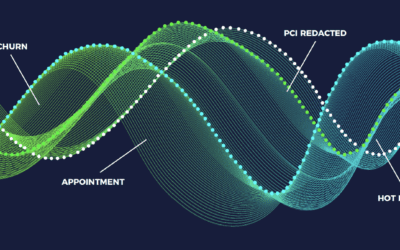Picture this: you’re talking out loud to a friend about your impulsive desire to go to the animal shelter and adopt a dog. Later, you open up Facebook to find that your feed has been inundated with advertisements for dog shelters, dog toys, and dog food.
This is the first time you’ve mentioned this prospect to anyone, and you have never searched for dog adoptions online. Immediately, your thoughts turn suspicious: is Facebook listening to you through your phone in order to advertise to you?
While Facebook vehemently denies partaking in such activities, and despite a lack of definitive evidence of audio espionage beyond the anecdotal, one can’t help but be skeptical. However, Orwellian omens aside, there is a ton of good that customer analytics is providing for businesses and consumers alike. And it all roots from one common practice: the aggregation of big data.
The Influence of Big Data
Done right, aggregating consumer data can offer boundless benefits to everyone. Businesses can see what people are interested in, align their messaging with those personas, and precisely segment and target individuals that will be most likely to interact with their brand. This has the potential to save a company thousands and even millions of dollars in misused resources. For customers, this means only seeing content that is geared toward their interests, eliminating the frustration of overexposure to irrelevant products or services.
Big data is just that, though—BIG. For example, retail giant Walmart is supplied 2.5 petabytes of data every hour from customer transactions alone. And a study conducted by Dell EMC posits that by 2020, there will be 1.7 megabytes produced for every person, every second. That is an astronomical amount of data for a company to sift through across a multitude of channels of interaction.
Aggregating big data in a way that provides results for an organization is hard. A lot of companies are currently doing it, but few are doing it well. While 85 percent of companies have a goal to become more data-driven, only 37 percent feel that their efforts have been successful.
Is your company doing everything it can to monopolize on the wealth of consumer information available? In order to gain a 360-degree view of your customer, you have to know how to hone in on the omnichannel landscape your customers utilize in order to answer key questions and drive better business decisions.
The Emergence of Media Monitoring
In recent years, social media has become the epicenter of nearly every facet of our lives. We use it to gather information, form opinions, and share those opinions with anyone who is willing to listen. In essence, the social media landscape is perhaps one of the most influential entities in our day-to-day existence. As such, social media has had a profound impact on the way people think about and interact with businesses. It’s now easier than ever to form a conclusion about a company or brand from online testimonials and reviews, and it would seem the bad exposure can vastly outweigh the good—a happy customer will tell three people, but an unhappy one will tell 3,000.
All of this feedback is flooding in, constantly ready for a company’s analysis and utilization. It would behoove companies to take this media activity to heart. Aggregating data from various media mentions of names, brands, or products are referred to as media monitoring. Media monitoring has seen a surge in growth recently, and with the newest developments of artificial intelligence and data mining techniques, most media monitoring functionality can be automated. And with increasing popularity of digital audio such as podcasts and online advertisements, it is extremely advantageous for companies to adopt speech recognition technology to dig deeper into media insights.
Machine Learning and Speech Recognition for Big Data
If you’re an enterprise-level company and you’re running a call center, you have the advantage of reaping the benefits of the voice of the customer. Every call made into your call center is rife with customer insights and data that can help you make informed steps to a better company. However, just as media monitoring can be a beast to take on manually, you wouldn’t dare waste the time that it would take to listen to hundreds and maybe thousands of calls every day.
With machine learning and speech recognition software, however, you can take your call analytics to the next level. Speech-to-text transcription ensures that every call made is documented and archived for analysis with near-perfect accuracy. And tools such as keyword extraction, topic generation, and keyword spotting make any queryable transcription available for analysis for things such as reasons for calling, brand mentions, customer emotions, and complaints. Taking advantage of speech recognition technology will open up a whole world of big data that give you greater insight into your overall customer journey.
Aggregating big data is no easy feat, but if you have the right processes and tools in place, you are just a few clicks away from an entire universe of consumer data that will help you drive business. VoiceBase has the most powerful speech-to-text API available today; let us help you open the door to a more complete view of your big data.


